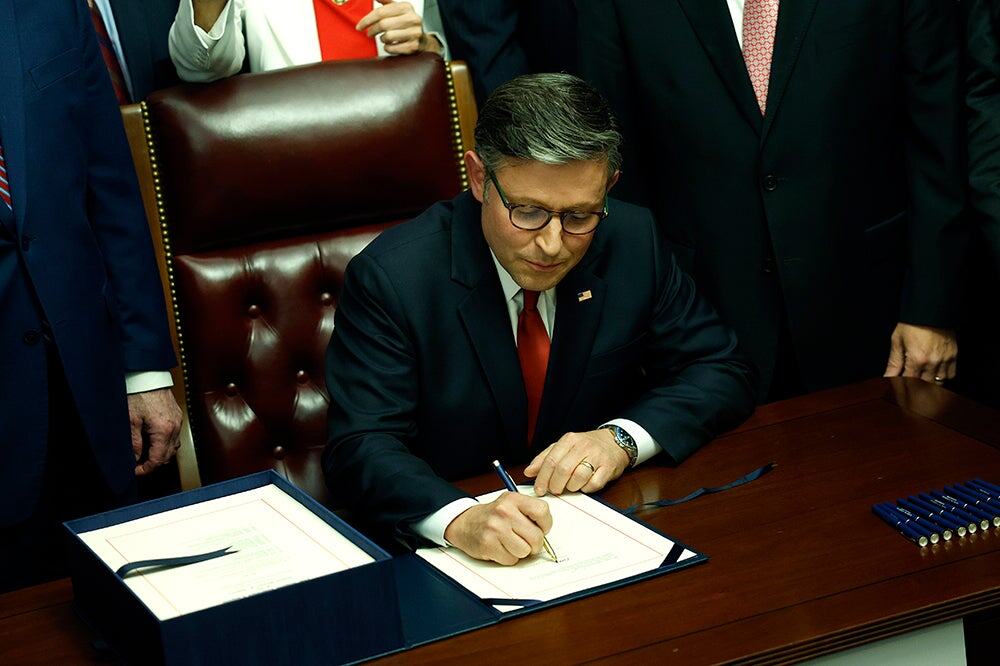With Election Just Hours Away, National Debt Remains Critical Priority for Voters
Deep Concern about America’s Debt Outlook, with October’s Fiscal Confidence Index at 51 (100 is neutral)
With just a day remaining in the 2024 election, Americans remain deeply concerned about the rising national debt. October’s Fiscal Confidence Index is 51 (100 is neutral), with voters across the country and across party lines seeking candidates who will prioritize solutions to our worsening fiscal outlook.
Nationwide, 80% of voters say their concern about the debt has increased and 82% urge leaders to spend more time addressing the debt. Also, 80% agree the debt should be a top-three priority for the president and Congress — up three points from last month and including strong majorities across party lines.
A Peterson Foundation poll released last month showed that the debt is a critical issue in the seven battleground states that are likely to decide the Presidential election, with 95% of Harris voters, 97% of Trump voters and 95% of undecided voters saying it’s important for candidates to have a plan to address the debt.
“As we near the end of a long election season, voters are sending a clear signal that they want candidates to have a plan to address the debt,” said Michael A. Peterson, CEO of the nonpartisan Peterson Foundation. “Across party lines, Americans agree that the $35 trillion national debt threatens our economic future. With major fiscal decisions coming next year, it will be critically important for our newly-elected leaders to prioritize solutions that put our nation on a stronger path.”
The Fiscal Confidence Index measures public opinion about the national debt by asking six questions in three key areas:
- CONCERN: Level of concern and views about the direction of the national debt.
- PRIORITY: How high a priority addressing the debt should be for elected leaders.
- EXPECTATIONS: Expectations about whether the debt situation will get better or worse in the next few years.
The survey results from these three areas are weighted equally and averaged to produce the Fiscal Confidence Index value. The Fiscal Confidence Index, like the Consumer Confidence Index, is indexed on a scale of 0 to 200, with a neutral midpoint of 100. A reading above 100 indicates positive sentiment. A reading below 100 indicates negative sentiment.
Fiscal Confidence Index Key Data Points:
- The October 2024 Fiscal Confidence Index value is 51. (The September value was 47. The August value was 48.)
- The current Fiscal Confidence Index score for CONCERN about the debt is 38, indicating deep concern about the debt. The score for debt as a PRIORITY that leaders must address is 23, indicating that Americans want elected leaders to make addressing long-term debt a high priority. The score for EXPECTATIONS about progress on the debt is 91. The Fiscal Confidence Index is the average of these three sub-category scores.
- For a description of the complete methodology, see the Appendix below.
The Peter G. Peterson Foundation commissioned this poll by the Global Strategy Group and North Star Opinion Research to survey public opinion on the national debt. The online poll surveyed 1,018 registered voters nationwide between October 21 and 23. It has a margin of error of +/- 3.1%.
Detailed poll results can be found online at: www.pgpf.org/FiscalConfidenceIndex.
APPENDIX: Fiscal Confidence Index Methodology and Questions
- The Fiscal Confidence Index is released monthly by the Peter G. Peterson Foundation.
- The Fiscal Confidence Index value is based on six questions in three categories.
- As is done with the Consumer Confidence Index, the first step in calculating the Fiscal Confidence Index is determining the “Relative Value” for each question. This calculation is made by taking the positive response for each question and dividing it by the sum of the positive and negative responses. Each question was asked on a four-point scale, and answers were weighted according to intensity, with the strongest responses counting twice as much as the middle responses (“much” better or worse answers count twice as heavily as “somewhat” better or worse answers).
- The scores for the Concern, Priority, and Expectations categories are determined by averaging the scores derived from the two questions in each category.
- The Fiscal Confidence Index value is converted from the Relative Value to place it on a scale on which 100 indicates equal positive and negative sentiment, while values below 100 indicate negative sentiment and values above 100 indicate positive sentiment.
- The questions are as follows:
###
ABOUT THE PETER G. PETERSON FOUNDATION
The Peter G. Peterson Foundation is a nonprofit, nonpartisan organization that is dedicated to increasing public awareness of the nature and urgency of key fiscal challenges threatening America's future, and to accelerating action on them. To address these challenges successfully, we work to bring Americans together to find and implement sensible, long-term solutions that transcend age, party lines and ideological divides in order to achieve real results. To learn more, please visit www.pgpf.org.
Further Reading
Quiz: How Much Do You Know About Healthcare in the United States?
The United States has one of the largest and most complex healthcare systems in the world. Take our healthcare quiz to see how much you know about the cost and quality of the U.S. healthcare system.
The Fed Reduced the Short-Term Rate Again, but Interest Costs Remain High
High interest rates on U.S. Treasury securities increase the federal government’s borrowing costs.
How Did the One Big Beautiful Bill Act Change Tax Policy?
See how OBBBA restructured the tax landscape across four major areas: individual tax provisions, business tax provisions, energy tax credits, and health-related tax changes.


